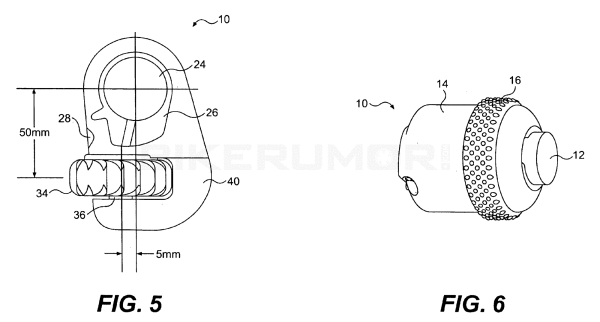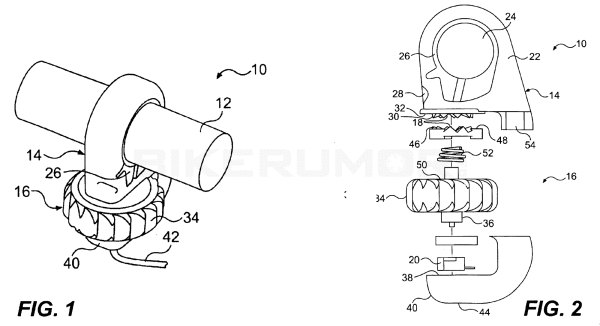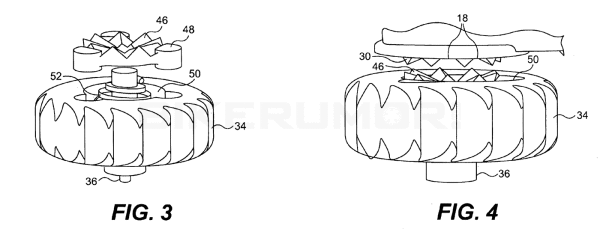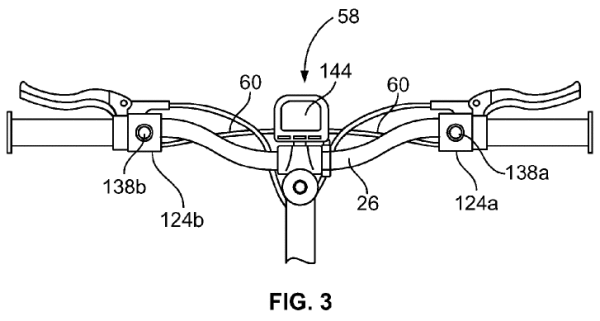Sure, SRAM’s road-going wireless group might be polishing itself up for primetime, but there’s a pretty decent chance they’re secretly working on a mountain bike equivalent, too. What’s particularly interesting is just how long they’ve been thinking of it.
Almost 30 years ago, SRAM started with Grip Shift as an alternative to the trigger and index shifters available at the time. Then they rebooted the design in 2012 with modern 10- and 11-speed options. Surprisingly, they had considered an electronic version of it more than five years prior!
These patent drawings show two variants of a patent awarded to SRAM in 2007, one with a rotating “switch” set perpendicular to and offset below the bar (Fig. 5), and a version that puts the rotating switch around the bar (Fig. 6, handlebar marked as “12”). It’s a pretty forward thinking concept considering Shimano’s Di2 didn’t hit the market until 2009…except that it actually cites a 1997 patent application for electronic mountain bike shifters from Campagnolo!
The patent filing describes the design as an electronic shifter using relative index shifting. That’s as opposed to absolute index shifting, and here’s the difference. Absolute index shifting would be when there are a fixed number of gears that correspond to an equivalent number of shift inputs, which basically means theres a separate button or switch for each gear. Not practical and not anything like current electronic systems on the market.
Relative index shifting, however, means that one input tells the system to shift up, and another input tells it to shift down. It doesn’t care how many gears are in the drivetrain, only that it’s being told to shift up or shift down. The simplest form of relative index shifting is a system that requires a distinct input for each shift (one push = one shift). The benefit of the design described here is that it allows multiple “pushes” by simply rotating the dial (34) through multiple “clicks”.
The clicks are made distinct by the indentations (30, 46), and the rotating dial (34, 16) sends signals to a circuit (20) that lets the system know which way you’re spinning it to differentiate between an upshift and a downshift.
It’s an interesting take on SRAM’s original signature product and one we could see having a place on the trail. The detent spring would need to be pretty burly to prevent overshifting in the heat of the moment, but that’s easy enough. Considering the application date, it’s not surprising that there’s no mention of wireless usage, but there’s no mention of wires, either.
The around-the-bar shifter could easily be modified to work on aero bar ends, too, making it an alternative shift method for triathlon and time trial bikes.
Of course, they’ve also shown they’re considering push-button electronic mountain bike shifters, too…



